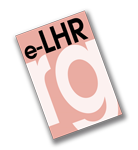Apuntes históricos en torno a la medicina y la relación médico-paciente. Especial referencia a la responsabilidad jurídica del médico. (RI §427591)

Historial notes regarding medicine and the doctor-patient relationship. Special reference to the legal responsibility of the doctor -
Mª de los Ángeles López-Cancio Suárez
Este trabajo, examina, sintéticamente, con un enfoque histórico-jurídico, la situación de la medicina y de la relación médico-paciente desde la Edad Media hasta la Ilustración.
En lo que se refiere a la Edad Media, podremos observar cómo durante la Alta Edad Media (s. V-XI d. C.) se produce un retroceso en la tecnificación de la medicina dando paso a la conocida como medicina monástica donde eran los monjes quienes prestaban asistencia al enfermo bajo los valores propios del cristianismo. Será necesario esperar a la Baja Edad Media (s. XI-XV d. C.) para observar cómo, gracias a la fundación de Universidades como la de Salerno, la medicina recobrará su carácter científico lo que supondrá el inicio de un cambio hacia la profesionalización de los médicos. En términos de responsabilidad, los códigos medievales, como el Liber Iudiciorum, regulaban aquellos supuestos en los que se podía exigir responsabilidad al médico que causaba un daño al paciente fijándose un sistema de responsabilidad mixto, es decir, había supuestos en los que la responsabilidad del médico era objetiva y otros en los que era necesario acreditar la existencia de culpa -responsabilidad subjetiva-.
Durante el Renacimiento, en lo que respecta a la formación del médico, se estudiará cómo las Universidades combinaron la teoría con la práctica para garantizar una mejor formación del galeno. En lo que respecta a la responsabilidad analizaremos la figura del Tribunal Protomedicato encargado de controlar el ejercicio de la medicina estableciendo sanciones para aquellos casos en los que el médico causaba un daño al paciente o realizaba malas prácticas.
Finalmente, se examinará la situación de la medicina en el Barroco y en la Ilustración y se hará de forma conjunta ya que los cambios con respecto a épocas anteriores fueron mínimos. Así pues, si bien es cierto que se produjeron avances en la ciencia médica, también es cierto que el tratamiento de las enfermedades no evolucionó al mismo ritmo. En lo que respecta a la responsabilidad del médico, en la Novísima Recopilación se sancionaba al médico o cirujano que ejerciese sin tener licencia para ello lo que, tal y como estudiaremos, supone, a nuestro modo de ver, una medida de protección hacia el enfermo.
LA MEDICINA EN ÉPOCA MEDIEVAL. 1. Consideraciones generales. 2. La formación del médico en época medieval. 3. La relación médico-paciente en el medievo y la responsabilidad derivada de dicha relación. 3.1. Liber Iudiciorum. 3.2. Partidas. 3.3. Fuero Real. II. LA MEDICINA EN EL RENACIMIENTO. 1. Consideraciones generales. 2. Formación de los médicos y cirujanos. 3. El Tribunal Protomedicato. III. LA MEDICINA EN EL BARROCO Y LA ILUSTRACIÓN. IV. CONCLUSIONES. V. BIBLIOGRAFÍA Y FUENTES.
This paper examines synthetically, with a historical-legal approach, the situation of medicine and the doctor-patient relationship from the Middle Ages to the Enlightenment.
As far as the Middle Ages are concerned, we can observe that during the High Middle Ages (5th-11th century AD) there was a setback in the technification of medicine, giving way to what is known as monastic medicine, in which monks provided care to the sick under the values of Christianity. It was not until the late Middle Ages (11th-15th century AD) that, thanks to the founding of universities such as the University of Salerno, medicine recovered its scientific character, marking the beginning of a shift towards the professionalisation of doctors. In terms of liability, the medieval codes, such as the Liber Iudiciorum, regulated those cases in which a doctor who caused harm to a patient could be held liable, establishing a system of mixed liability, i.e. there were cases in which the doctor's liability was objective and others in which it was necessary to prove the existence of fault - subjective liability.
During the Renaissance, with regard to the training of doctors, we will study how the universities combined theory with practice in order to guarantee a better training of doctors. With regard to responsibility, we will analyse the figure of the Protomedicato Court, which was responsible for controlling the practice of medicine by establishing sanctions for those cases in which the doctor caused harm to the patient or carried out malpractice.
Finally, the situation of medicine in the Baroque and the Enlightenment will be examined together, since the changes with respect to previous periods were minimal. Thus, while it is true that there were advances in medical science, it is also true that the treatment of diseases did not evolve at the same pace. With regard to the responsibility of the doctor, the Novísima Recopilación penalised any doctor or surgeon who practised without a licence to do so, which, as we shall analyse, was, in our opinion, a measure of protection for the patient.
I. MEDICINE IN MEDIEVAL TIMES. 1. General considerations. 2. The training of the doctor in medieval times. 3. The doctor-patient relationship in the Middle Ages and the responsibility derived from said relationship. 3.1. Liber Iudiciorum. 3.2. Partidas. 3.3. Fuero real. II. MEDICINE IN THE RENAISSANCE. 1. General considerations. 2. Training of doctors and surgeons. 3. The Protomedical Court. III. MEDICINE IN THE BAROQUE AND ILLUSTRATION. IV. CONCLUSIONS. V. BIBLIOGRAPHY AND SOURCES

 DIRECTORA
DIRECTORA